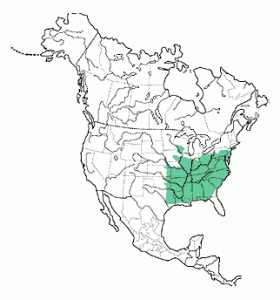For their wellbeing, Kentucky warblers are moving
Do their migration patterns predict
the movement of US families?
For centuries this breed has migrated from their winter quarters in Central America to breeding grounds up here.
 Some fly to the riverbanks in Maryland’s Mattawoman Creek. Some to Roanoke River Bottomland in North Carolina or Mississippi’s Pascagoula River. But these days birds returning each April find fewer of the caterpillars and small spiders they eat. Their nestbuilding materials, oak leaves and coarse grasses, are more scarce. Each year some of the breed choose to keep going north a little farther to find the hardwood forest in low wetlands alongside a river that provides these needs
Some fly to the riverbanks in Maryland’s Mattawoman Creek. Some to Roanoke River Bottomland in North Carolina or Mississippi’s Pascagoula River. But these days birds returning each April find fewer of the caterpillars and small spiders they eat. Their nestbuilding materials, oak leaves and coarse grasses, are more scarce. Each year some of the breed choose to keep going north a little farther to find the hardwood forest in low wetlands alongside a river that provides these needs
This isn’t new. By 2000 the great-tailed grackles nested about 200 miles farther north than in 1972. Hundreds of other species are gradually moving north or to higher elevations.
Similar factors could be nudging us humans in the same direction. Our Where-To-Live Scorecards for 70,000 US localities, looks ahead at the costs and risks in individual communities. Instead of the loss of caterpillars and spiders, we look at the pressures on water resources, energy and transportation costs, jobs, and many other factors. To have more of the things your family needs, a move may be worth considering for your future – or your children’s future.



